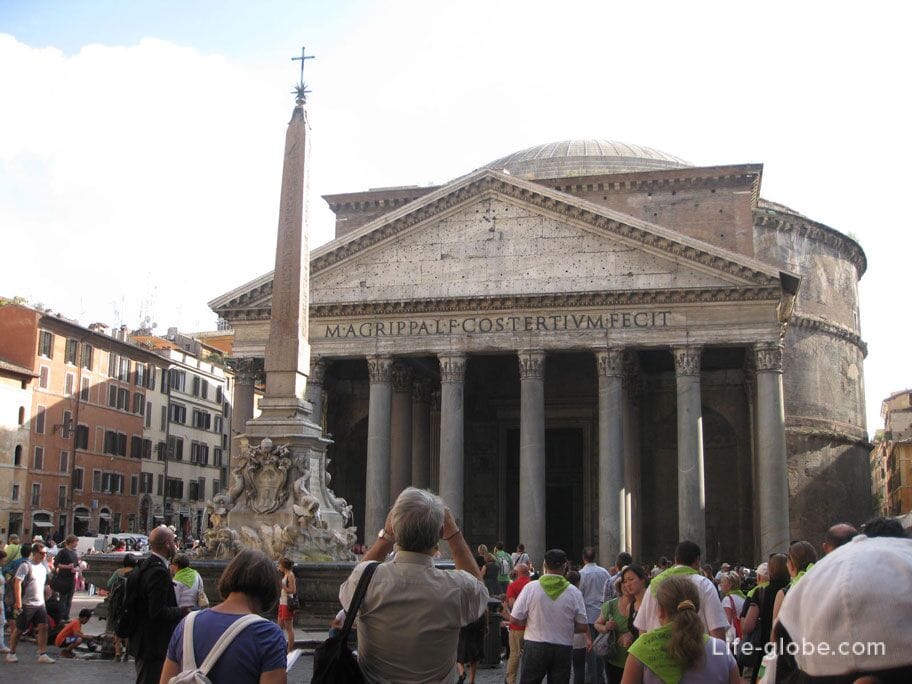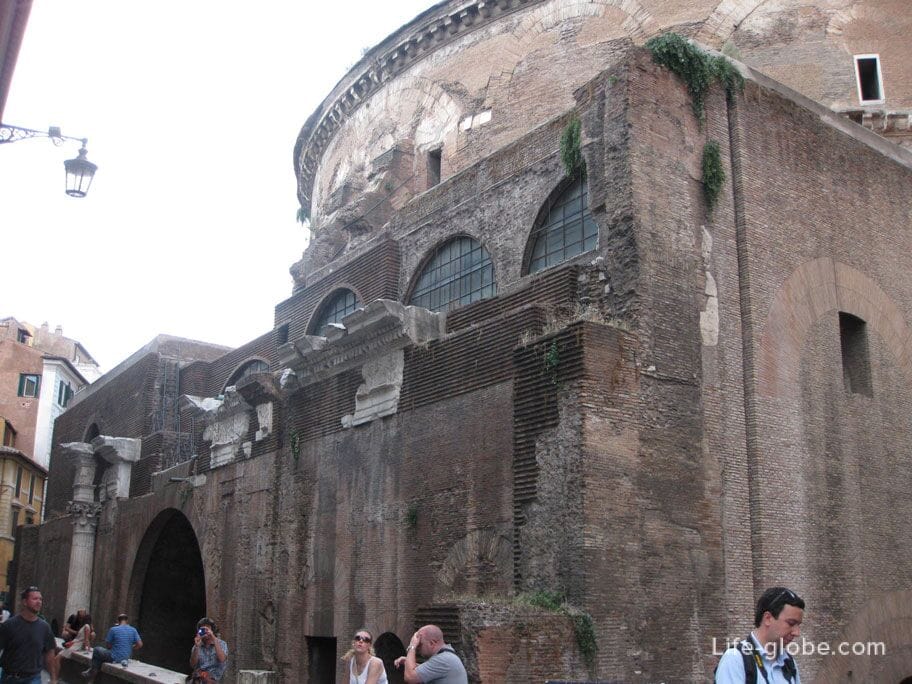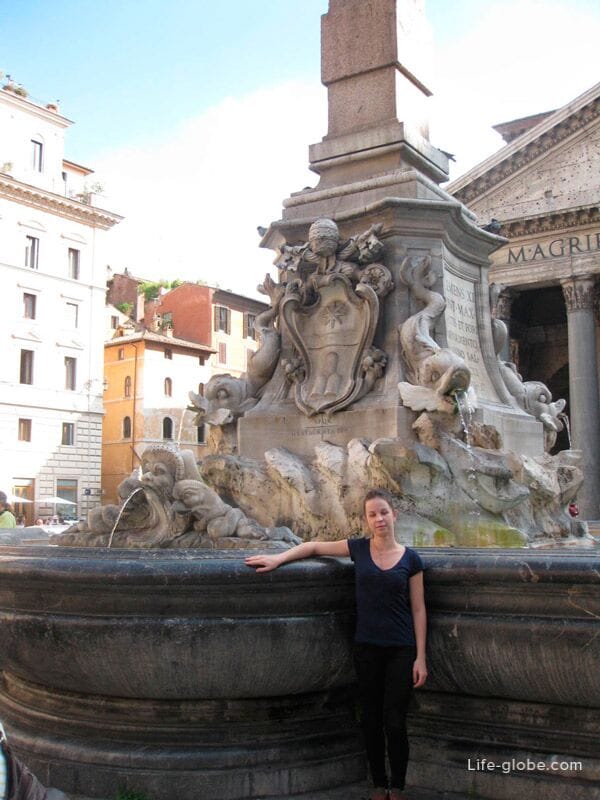
The Pantheon is one of the oldest and most visited attractions of Rome. It is also a historical and architectural monument of Ancient Rome, the legacy of the Renaissance.
The Pantheon literally translates as ham of the Gods. The Roman Pantheon for over two thousand years, it was erected in place of the previous Pantheon, built by mark Vipsanius Agrippa between 27 and 25 BC as a temple dedicated to the twelve gods and the Monarch. It is believed that the present building that we see today is the result of a radical reconstruction of the structure, executed by order of Emperor Hadrian between 118 and 125 ad.

On the pediment of the Panteion visible Latin inscription: "M. AGRIPPA L F COS TERTIUM FECIT" which is translated as: "Marcus Agrippa, son of Lucius, three times Consul, built this".
Originally the Pantheon was an ancient pagan temple. Later, on may 13, 609, when the Byzantine Emperor Phocas gave the temple to Pope Boniface IV, the Pantheon was consecrated as a Christian Catholic Church of Saint Mary and the Martyrs (Santa Maria ad Martires). Since then, the 13 day of may was celebrated as the feast of all saints for the Catholics. However, later, somewhere in the middle of the eighteenth century, Pope Gregory III to November 1 consecrated one of the chapels of the Cathedral of St. Peter in the Vatican, in honor of all Saints. And from that moment, the date for the celebration of all Saints Day, Catholics and Protestants falls on 1 November.
The Pantheon is a truly Grand structure, here, as nowhere else can touch the history of centuries, although it was in Rome such places a lot, take at least the most well-known Colosseum, Large antique circus, the Forum of Trajan and other magnificent buildings of Rome. Besides, in those days the building of the Pantheon was a great engineering achievement of antiquity.
Currently, besides the historical and architectural heritage, the Pantheon attracts many tourists with its interesting and unusual architecture. The fact that Pantheon has no Windows and the only source of light is a large round hole, diameters of 9 meters, located in the dome of the Pantheon. It is through this opening and lots of light inside the Pantheon, illuminating the interior.

In bright Sunny weather, the light in the hole on the ceiling, not dissipated, and comes a live stream from the dome to the floor, which attracts attention. In case of rain, water falling down, down 22 almost invisible holes in the floor. And when it's snowing, snowflakes falling in the hole of the dome, thanks to the wind and the atmosphere inside the Pantheon, form a fabulous swirls similar to dancing.
In the Pantheon of only one hole, not because the Romans were too lazy to cut through the wall, not at all, it was done on purpose, since in Ancient Rome one hole meant the unity of all deities.
View of the Pantheon from the rear of the building from the street Via della Palombella


In the Pantheon are buried the kings of Italy: Victor Emmanuel II and Umberto I, Queen Margherita of Savoy and the great Italian painter and architect Raphael.
The entrance to the Pantheon is absolutely free. The temple is open to the public from 8.30 to 19.30 on weekdays and from 9.00 to 18.00 on Sunday. Closed on some holidays. Located in the heart of Rome's historic centre, in Piazza della Rotonda, 00186 Roma, Italy. You can get there on foot or by metro, the nearest station is Barberini.
The Pantheon is located on the square Piazza della Rotonda (Piazza della Rotonda) or simply, as it is popularly called Piazza del Pantheon and Piazza Rotunda.
This small but quite cozy area is located at the main entrance to the Pantheon. And it was named after its main structure of the Pantheon.
Around the area you can see buildings built in several architectural styles. The perimeter of the area located hotels and cafes with open terraces, and in the center it is decorated with the eponymous fountain - Fontana del Pantheon.

This fountain of the Renaissance, was built around 1575 by the architect Giacomo della Porta. Initially, the fountain consisted of a rectangular tank grey African marble, and the fountain pool was located the porphyry and two stone lions. In 1711 at the behest of Pope Clement XI Albani Fountain of cases the Pantheon was rebuilt, and surmounted with a tall Obelisk.
Later, in 1974 and in 1991-1992 the fountain also been modified.
